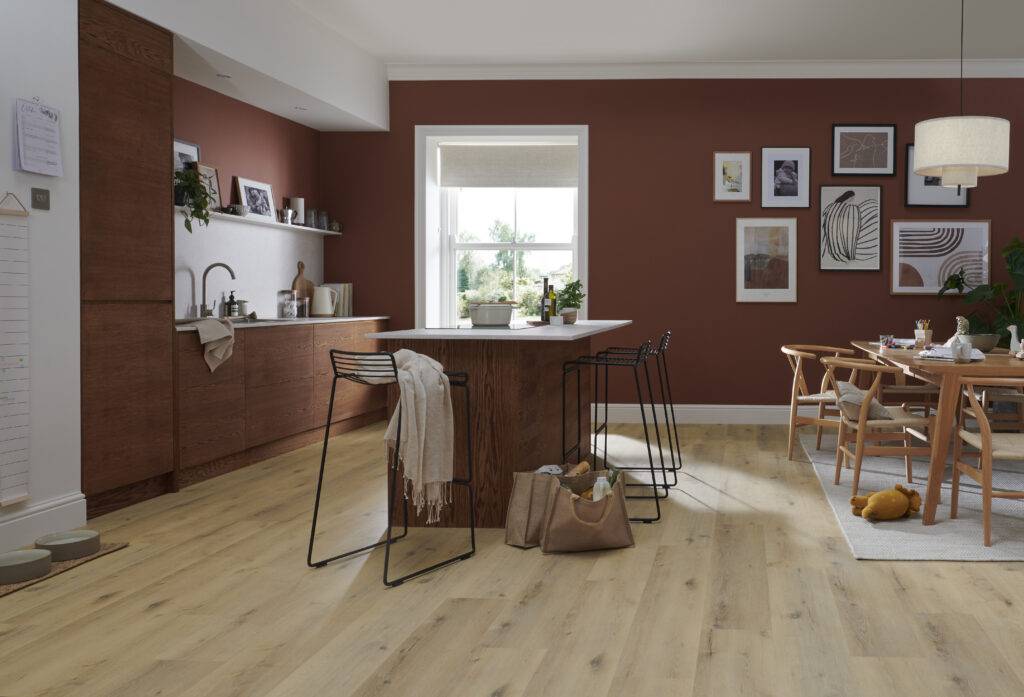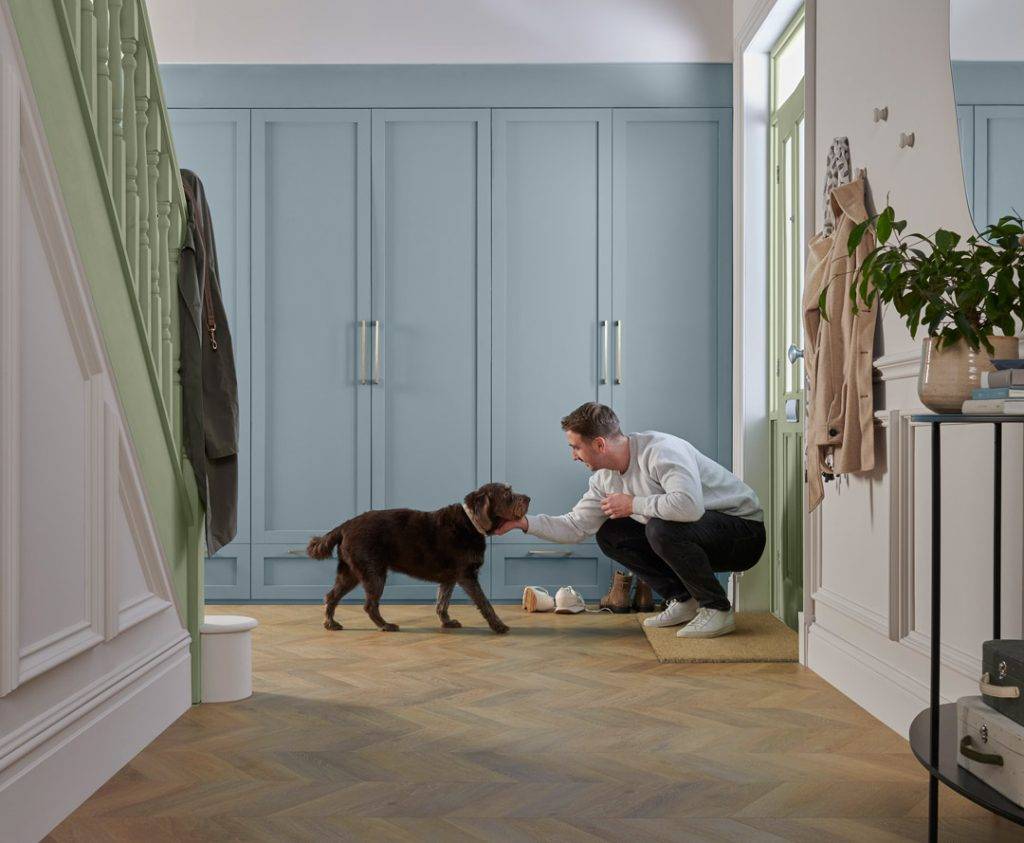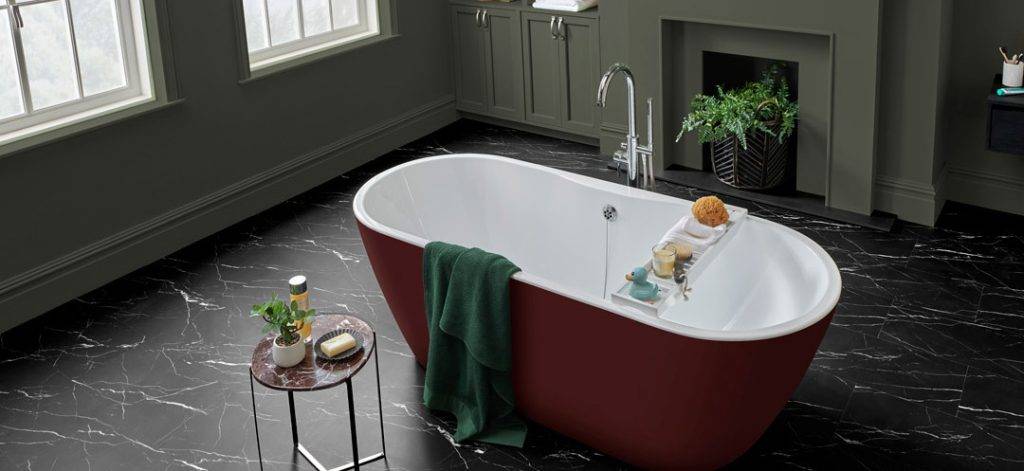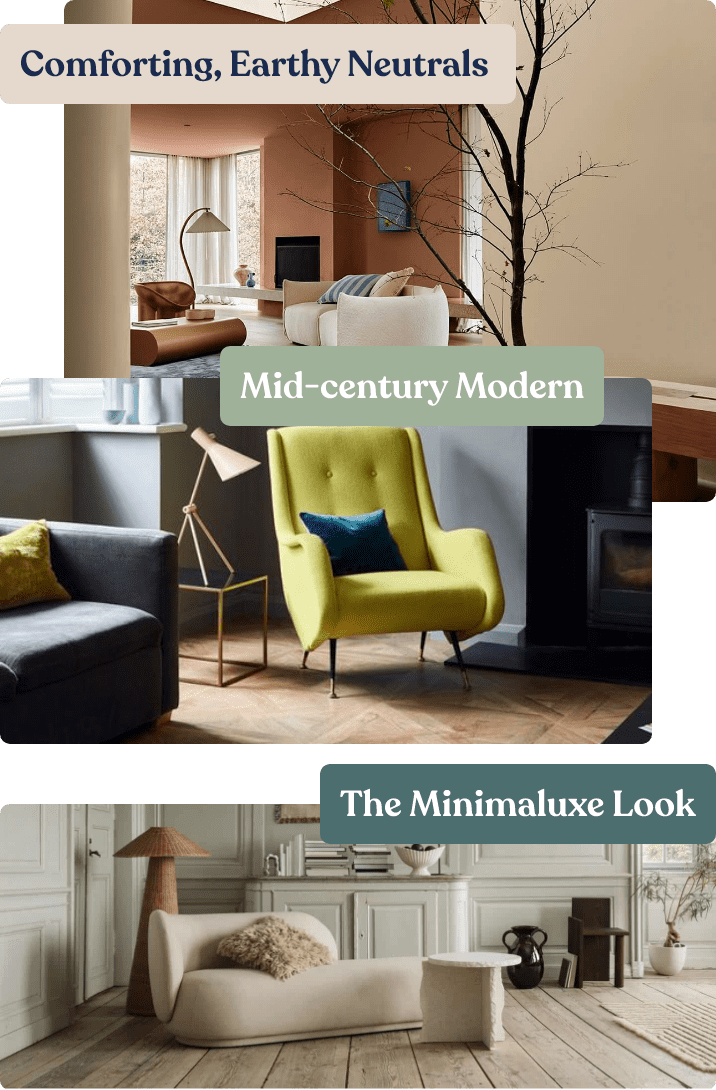Building homes from the floor up
Up to 3 FREE Samples
Building homes from the floor up
Up to 3 FREE Samples
Home / Patterned LVT Flooring
LVT Patterned Floor
Take a look at our LVT patterns to see quality examples of what your home could look like.
Tired of plain flooring? Patterned LVT is a unique and stylish way to switch up your home decor.
Filter By:
Colour
Room Suitability
Plank Suitability
Species
Suggested Flooring
Whether you’re seeking the timeless allure of hardwood or the sleek aesthetic of stone, our diverse range of LVT flooring suggestions promises to elevate your interior with unmatched charm and resilience. Experience the perfect harmony of beauty and practicality as you explore our innovative selection, curated to inspire and transform your home.
Clay Earth
Midnight Olive
Coastal Cottage




Trends come and go but a Luvanto floor is forever.
Keep your interiors looking show-home worthy with our colour and trend inspiration. As experts in colour forecasting and pairings, we match the latest trends and colours with each of our flooring shades so you can stay tickled pink with your décor all year round.
Our customers rate us Excellent
4.7/5 on verified customer reviews
Related Articles
Dive deeper into the world of luxury vinyl tile (LVT) flooring with our curated selection of articles, offering comprehensive insights and expert guidance on this versatile flooring solution. Whether you’re considering LVT for your next renovation project or simply seeking to expand your knowledge, our collection of articles serves as a valuable companion on your journey to achieving beautiful, long-lasting floors.
The Natural LVT flooring trend: Bring the Outdoors in
Crafting Industrial Style: Decorating with Stone Effect LVT Flooring from Luvanto
How to Style Dark Flooring
How to Style Herringbone Flooring
Understanding LVT Specifications and Technical Details: Your Guide to a Perfect Floor
Waterproof LVT for High-Moisture Bathrooms
Frequently Asked Questions
What is Patterned LVT Flooring?
When you think of luxury vinyl tiles (LVT), you probably think of a high-quality flooring option that mimics stone, wood, or ceramic. That’s true, LVT’s high-resolution appearance is highly varied across the board, including a wide array of patterned flooring.
Having patterned flooring is an option with a high potential to impress. Patterned LVT flooring is an affordable option due to its cost-effectiveness and easy installation. We’ve seen homes that give off a feeling of expansiveness beyond what the home offers, as well as the ability to project moods onto an area that you simply couldn’t do cost effectively with other flooring options.
Ready to explore LVT patterns?
Take a look at our patterned LVT flooring options to see quality examples of what your home could look like, and discover the perfect floor for your space.
There are many ways that you can use patterned vinyl flooring to enhance the look of your home and give it character. As an affordable option, patterned vinyl flooring is cost-effective, easy to install, and maintain. Here are some suggestions.
Patterns can range in tone and colour, essentially making our flooring suitable for a wide variety of rooms.
Luxury vinyl flooring offers two main ways to pair patterns: contrast and complementation.
The contrast is a bit less simple:
Balancing styles is very important when mixing patterns, as one can overpower the other and the harmony, regardless of whether it’s contrast or complement, can be lost.
Flooring
Inspiration
Where To Buy
Help And Support
Copyright © 2024 Luvanto - QA Flooring Solutions Ltd. All Rights Reserved.
QA Flooring Solutions Ltd is a company registered in England
Registered Office: Unit 2 Hurricane Drive, Speke, Liverpool, L24 8RL
Company Registration Number: 07870268 | VAT Number: 852026449
| Cookie | Duration | Description |
|---|---|---|
| cookielawinfo-checkbox-analytics | 11 months | This cookie is set by GDPR Cookie Consent plugin. The cookie is used to store the user consent for the cookies in the category "Analytics". |
| cookielawinfo-checkbox-functional | 11 months | The cookie is set by GDPR cookie consent to record the user consent for the cookies in the category "Functional". |
| cookielawinfo-checkbox-necessary | 11 months | This cookie is set by GDPR Cookie Consent plugin. The cookies is used to store the user consent for the cookies in the category "Necessary". |
| cookielawinfo-checkbox-others | 11 months | This cookie is set by GDPR Cookie Consent plugin. The cookie is used to store the user consent for the cookies in the category "Other. |
| cookielawinfo-checkbox-performance | 11 months | This cookie is set by GDPR Cookie Consent plugin. The cookie is used to store the user consent for the cookies in the category "Performance". |
| viewed_cookie_policy | 11 months | The cookie is set by the GDPR Cookie Consent plugin and is used to store whether or not user has consented to the use of cookies. It does not store any personal data. |
Building homes from the floor up
Up to 3 FREE Samples